Is it an Archaeological site or Not? - Part 1
Is it an archaeological site or Not?
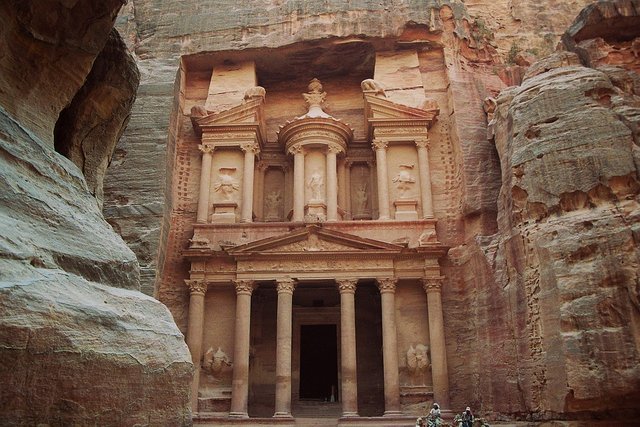
Broadly defined, archaeological sites are locations in which evidence of human activity exists. However, in practice archaeological sites are generally defined in more narrow terms - based on such things as artefact density and time period. Whether material remains are defined as an archaeological site, largely depends on the research objectives.
Archaeological Sites

Archaeological sites are places where artefacts, features, structures and organic and environmental are found together.
The Classification of sites
Fagan (1996/1997:103-104) applies four criteria in classifying the various types of archaeological sites. He then uses these criteria to identify broad site functions.
- By archaeological context: that is surface sites, single-level occupations, temporary camps and stratified settlements.
- By artefact content: that is pottery, stone tools, metal artefacts, porcelain, etcetera. Sub-assemblages of artefacts are subsequently used to identify them as Early,
Middle or Later Stone Age, Iron Age, Maya, historical sites.
- By Geographical location: that is cave or rock shelter sites, valley sites, hilltop sites.
- By artefact content related to the function: sub-assemblages reflect individual behaviour and sites are classified accordingly, namely as kill sites, dwelling sites.
Common Site Functions
- Living or habitation sites
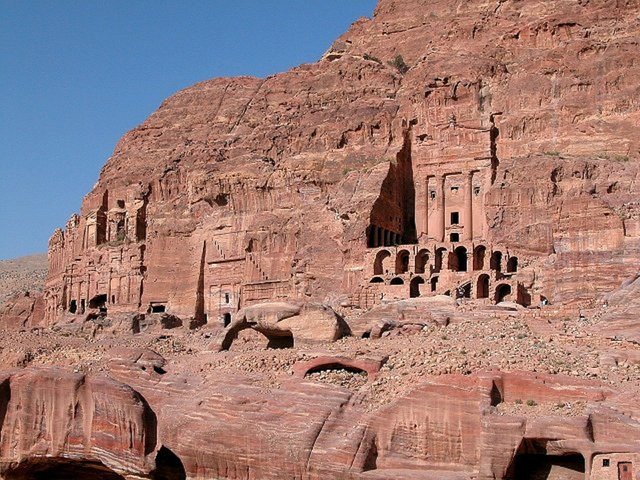
Some examples are Stone Age caves and rock shelters, pueblos and tells. Complex habitation sites are often associated with sites reflecting specialized activities such as agricultural terraces, cemeteries and temporary camps.
- Kill sites
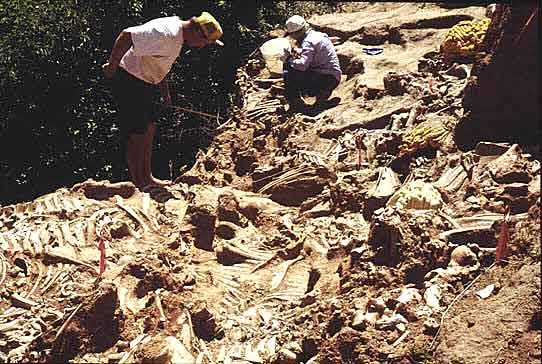
Projectile points and butchery tools are often found in association with such localities.
- Ceremonial sites
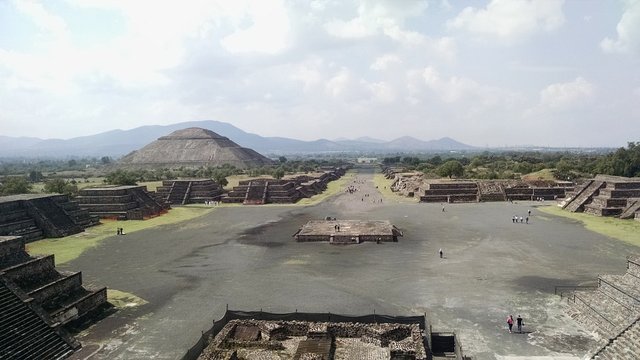
For example, Mesopotamian ziggurats, Inca temples, ceremonial centres in Mayan cities, Stonehenge in England, temples.
- Burial sites

Cemeteries and isolated tombs. The pyramids in Egypt and the Pazyryk burial mounds in Siberia contain elaborate burials with special grave goods.
- Trading, quarry, and art sites
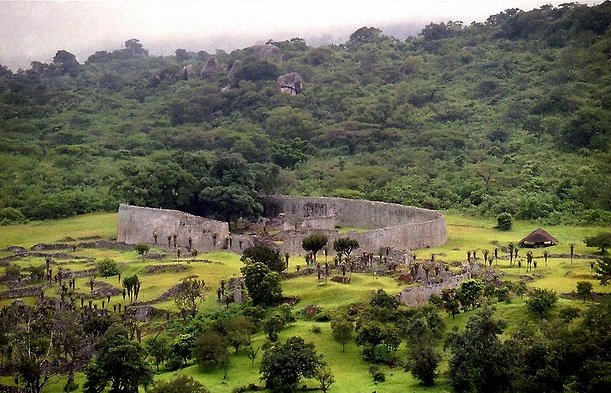
Exotic trade goods and high percentages of trade items characterize trading sites or networks (eg: beads at the Iron Age sites of Mapungubwe and Great Zimbabwe in Southern Africa).
Special tools that were used in mining and processing metals serve to identify quarry sites. Art sites are marked by the presence of artworks such as the numerous rock paintings on the walls of caves and rock shelters in Africa, Australia, California and Europe.
Sites that have a bearing on the early history of humans
- Surface Sites
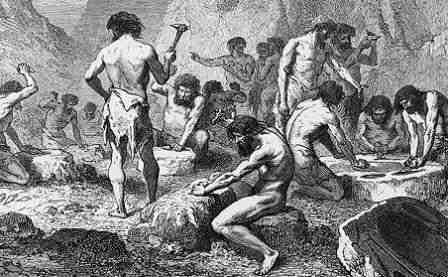
Stone implements are often found on the surface. These implements may have been discarded by prehistoric humans, or they could have been lost in the course of a hunt or in the humans, or they could have been lost in the course of a hunt or in some other way. As a result of the erosive action of wind or water, they may subsequently have been covered with a layer of sand, only to be laid bare at a later stage by the same erosive agents and left to lie on the earth's surface.
It stands to reason that a few isolated implements, which are collected at great distances from one another on the surface, are of minor importance to the archaeologist,because as a rule a typological comparison between such implements is of the limited value.
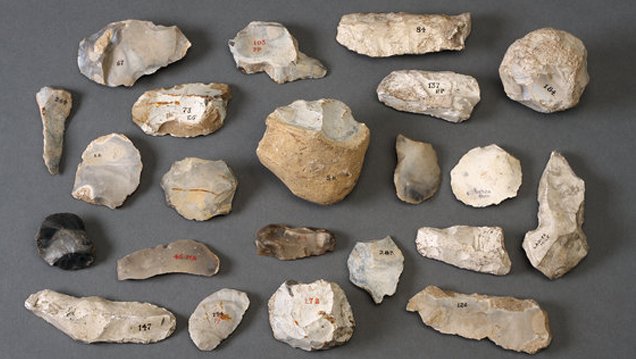
Often large numbers of stone implements are found on the surface. This fact alone is enough to tell us that at an earlier stage the conditions in this particular area must have been exceptionally suitable for hunting and habitation. By making a close study of geology of such an area we can arrive at certain conclusions concerning the climatic conditions which may have existed during the period when the stone implements were deposited there.
Generally speaking, however , the value of surface finds is limited because stone implements are easily moved and a typological-technological comparison made without reference to stratigraphic conditions can very often be misleading. By means of a typological-technological study of such a collection we can also determine whether it pertained to a single industrial complex or to different ones.
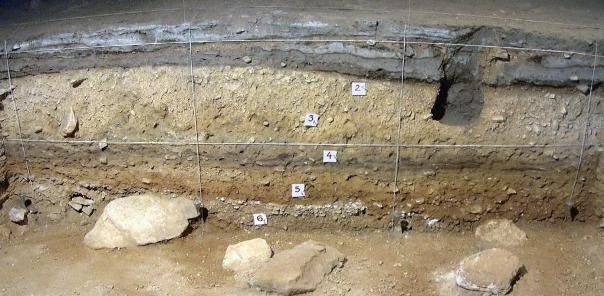
There are many surface sites, especially in dongas, where stone implements belonging to different industrial complexes or industries are found together. through erosion (water or wind)- possibly due to a change in climate- one layer after the other is removed. The heavy materials (stone and stone implements) is left behind until ultimately all the objects from the various layers are resting on the floor. When part of the orginally stratified deposit is left standing on the bank of the donga or when it is preserved in the form of a small island, then mixed assemblage can be studied typologically (and technologically) as well as stratigraphically.

Certain conclusions may be drawn from the material used in the manufacture of the implements. We can say whether the same material was used throughout and whether it was to be found near the site. The degree of weathering and the type of patina both enable us to establish to a certain extent whether or not the stone implements were washed together from other sites in the vicinity.
References: Fagan (1996/1997:103-104)
In our next two posts- We will discuss: Part 2 : Cave and Rock Shelters
Larger open-air sites
Part 3 : Seal Sites (deposits)
River Deposits
Please Follow me for more on Archaeology and History.
Please check out my other posts:
Understanding the Archaeological Record : The Aims and Subject Matter of Archaeology - Part 2
The Aims and Subject Matter of Archaeology - Part 1
Archaeology and the Natural Sciences
Introduction to Ethnographic Analogy and Ethnoarchaeology
The Nature and Scope of Archaeology
The Three - Age System : The Stone Age, The Bronze Age and The Iron Age
The Roots of Modern Archaeology
Significant 18th and 19th Centuries Discoveries in Archaeology
Archaeology as a Profession- Part 2
Archaeology as a Profession- Part 1
To Become or Not Become an Archaeologist? - Introduction to Archaeology Part 2
Please Upvote and Resteem.
Thank You!
Thats NSO job :)
This is another great and very interesting post!
I am of the opinion that there were very advanced civilizations before some catastrophic event happened and wiped them out.
I think humans have started over many times throughout history for one reason or another.
Perhaps if we survive we will be able to either look back in time or even travel to the past. Maybe I will call it temporal - archeology.
Thanks, my friend!
....upvoted and resteemed
Hi @acwood. I like your thought. This article might be of interest to you:
http://www.ancient-origins.net/ancient-places-asia/mohenjo-daro-massacre-00819
@sashin got you a $1.1 @minnowbooster upgoat, nice! (Image: pixabay.com)
Want a boost? Click here to read more!
if this is not archeological site, so Madona is yet virgin!
Did you even read my post?